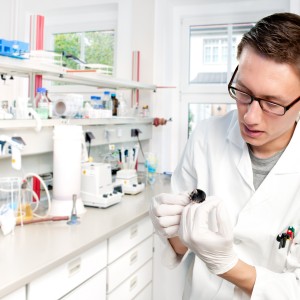 Researchers at Vanderbilt University in Nashville, Tennessee created a method based on probiotic bacteria to produce an anti-obesity molecule capable of suppressing hunger and preventing obesity. The results will be presented this week at the 249th National Meeting & Exposition of the American Chemical Society (ACS) in Denver, Colorado.
Researchers at Vanderbilt University in Nashville, Tennessee created a method based on probiotic bacteria to produce an anti-obesity molecule capable of suppressing hunger and preventing obesity. The results will be presented this week at the 249th National Meeting & Exposition of the American Chemical Society (ACS) in Denver, Colorado.
Obesity is a matter of concern worldwide, with studies suggesting an obesity epidemic within the human population. Obesity is known to be strongly associated with an increase in the risk of developing several diseases, including type 2 diabetes, heart diseases, stroke and some types of cancer. It is estimated that one in every three Americans is obese.
Several studies focusing on obesity have shown that the microbe population in the human gut may be a determinant factor for the risk of obesity and related health complications, suggesting that changes in the gut microbiome may have an impact in the overall health of the individual.
The research team focused on N-acyl-phosphatidylethanolamines (NAPEs), which are hormones released by the small intestine after a meal. These NAPES are released into the bloodstream reaching the hypothalamus in the brain and suppressing appetite due to a metabolic conversion into N-acyl-ethanolamines (NAEs), which are potent appetite-suppressing lipids. As a delivery system for NAPEs, researchers considered bacteria, as they are of low maintenance.
The goal of the team was to generate therapeutic bacteria that were able to inhabit the gut for a period of six months to one year, offering a constant drug delivery. The idea is that the individual would not have to take a pill or medication every day, which is usually the case in weight-loss drugs, avoiding the risk that people would not take their medication adequately. “So we need strategies that deliver the drug without requiring the patient to remember to take their pills every few hours,” noted Dr. Sean Davies in a news release.
The research team engineered a strain of probiotic bacteria for the production of NAPEs. The programmed bacteria were introduced in the drinking water of obese mice models under a high-fat diet, with fatty livers and signs of diabetes, to test its efficacy during a period of eight weeks. Researchers found that mice drinking water with NAPE-producing bacteria gained 15 percent less weight in comparison with mice who drank water with a control non-programmed bacteria or just plain water. The glucose metabolism and liver status of mice under NAPE treatment was also found to be improved. Up to the 12 weeks after treatment, mice that were given NAPE therapeutic bacteria were still leaner and lighter in comparison to control mice.
Researchers also found these therapeutic bacteria had no effect in mice lacking the enzyme that converts NAPEs to NAEs. “This suggests that it might be best to use NAE-making bacteria in eventual clinical trials,” said Dr. Davies. “We think that this would work very well in humans.”
The reason that is halting the advance of this weight-loss strategy into human clinical trials is the potential risk that treated individuals can excrete these special bacteria and transmit it to other individuals by fecal exposure. “We don’t want individuals to be unintentionally treated without their knowledge,” explained Dr. Davies. “Especially because you could imagine that there might be some individuals, say the very young or old or those with specific diseases, who could be harmed by being exposed to appetite-suppressing bacteria. So, we are working on genetically modifying the bacteria to significantly reduce its ability to be transmitted.”


